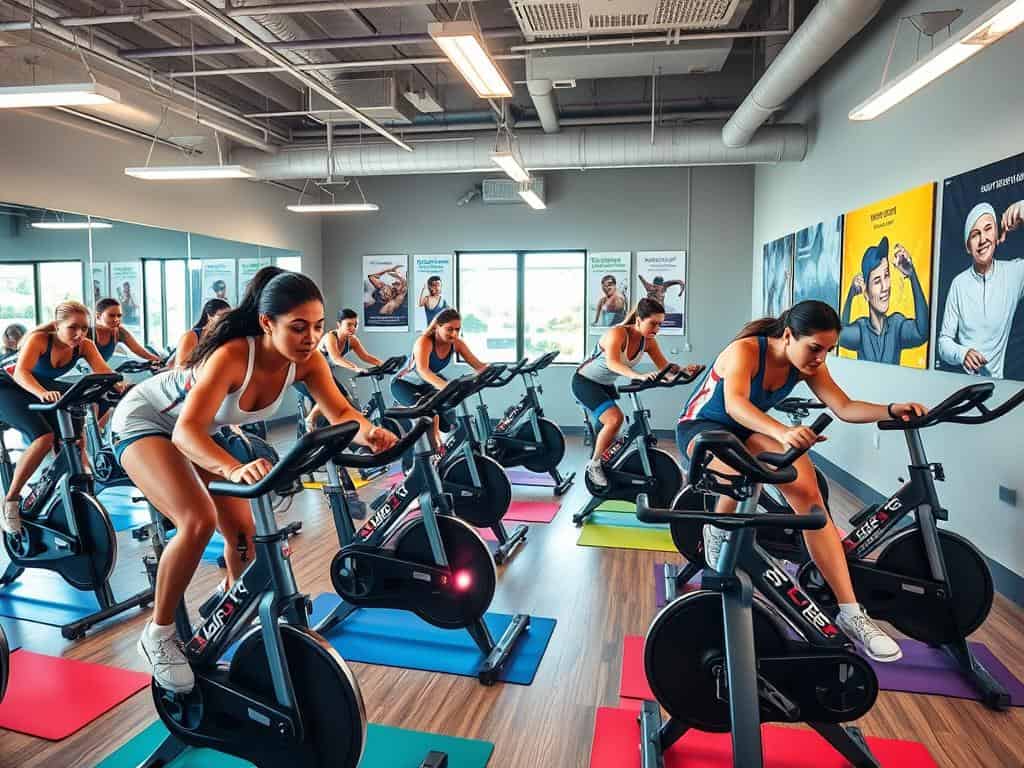A lot of injuries in sports and workouts come from not warming up right. Studies show that good warm-up exercises can lower injury risks, make muscles more flexible, and boost how well you perform. Still, many who love to work out skip this important step. When we don’t warm up, we’re more likely to get hurt or feel let down by our fitness progress.
Starting with a structured warm-up gets our central nervous system ready for action. It makes our bodies ready to handle the workout ahead. Think of it like warming up a rubber band before stretching it – it works better. Spending just 10 to 15 minutes on dynamic stretches and movements can keep injuries away. Plus, it can help us achieve our best performance levels.
Key Takeaways
- Proper warm-ups significantly reduce injury risks.
- Dynamic warm-ups activate muscles and improve flexibility.
- Tailored warm-ups boost performance in specific activities.
- A warm-up routine should last 10-15 minutes for best results.
- Complex routines for advanced athletes can enhance effectiveness.
- Skipping warm-ups can lead to performance setbacks.
Importance of Warm-Up Exercises
Warm-ups are key for great performance and lowering injury risk during exercises. They get muscles moving and ready the body for what’s coming. This means going from rest to ready for action.
Understanding the Purpose of a Warm-Up
A good warm-up is essential. It helps prevent injuries and sets you up for a better performance. Just 10 to 15 minutes of getting ready makes a big difference.
In this time, doing things like dynamic stretches and easy cardio helps. These activities increase blood flow and warm up your muscles. This is very important for them to work well. Pros might spend an hour warming up to get everything just right for their activity.
Benefits of Warming Up Before Exercise
Warming up does more than just prevent injuries. Research shows that 79% see better performance after a good warm-up, with improvements between 1% and 20%. It makes you more flexible and helps you move better during a workout.
Plus, a proper warm-up can make muscle soreness less likely afterwards. This lets you recover faster. I’ve found that adding dynamic stretches and muscle activation techniques really helps. It makes sure I’m as ready as I can be for my workout.

Effective Warm-Up Exercises for Different Activities
Warm-up routines are key to better performance and preventing injuries. I make sure my warm-up matches my activity, like running or weight lifting. Each activity needs a special warm-up to boost mobility and flexibility, making the workout more effective.
Dynamic Stretches for Running
For running, I go for dynamic stretches that get the legs ready. Walking lunges and high knees help my joints move fully. These exercises raise my heart rate and ready my muscles for running’s demands. This preparation improves flexibility and cuts down on muscle tension, essential for top performance outdoors.
Warm-Up Exercises for Strength Training
In strength training warm-ups, I start with lighter sets to master the technique. This practice wakes up my muscles and makes them work better. I do resistance exercises like banded pull-aparts for my upper body and focus on core with push-ups. These help increase blood flow, prepping my muscles for a good lifting session.
General Warm-Up Routine
A general warm-up routine works for different activities. I typically spend 5 to 10 minutes on medium-level aerobic exercises and dynamic stretches. This might include exercises like jumping jacks or arm circles. It boosts my flexibility and motion range. Adding a balanced routine to my warm-up prepares my body, improving mobility for any workout.
Conclusion
Warming up before exercise is key to avoiding injuries and doing your best. I’ve found that 10-15 minutes of warm-up exercises really get me ready. These exercises wake up my muscles and joints and prepare them for what’s coming.
By increasing my heart rate and doing dynamic stretches, like swinging my legs and circling my arms, my flexibility improves. This also helps reduce muscle soreness after my workout.
Using a foam roller helps loosen tight muscles and increases blood flow, which makes my workout better. I’ve learned that static stretching doesn’t belong in warm-ups. It could actually make things worse by decreasing my performance and raising the chance of getting hurt.
This warm-up guide has made it clear. No matter what exercise I do, a good warm-up is the foundation of success and safety. It’s essential for reaching my fitness goals.



